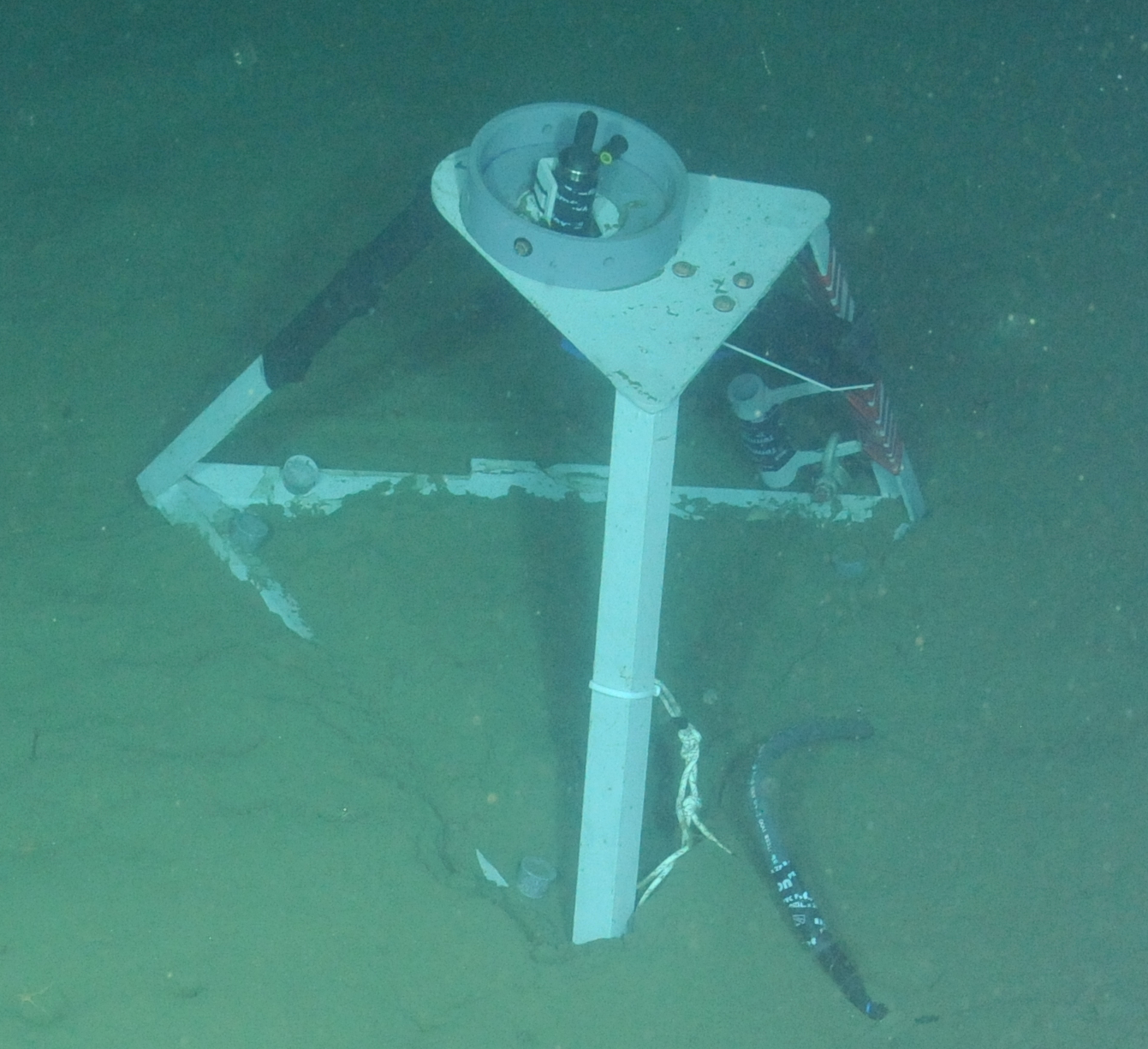A digital hydrophone is a passive acoustic sensor (an underwater microphone) that converts sound energy to electrical energy, with a binary stream output. The Broadband Acoustic Receiver (Hydrophone) "listens" for seismic events, landslides, sea creatures, and human-generated noise in the ocean (e.g. ships). The instrument can hear and record sounds spanning marine mammal vocalizations in the water column to rain at the surface. The OOI-RCA requirements specified broadband hydrophones with good noise floor characteristics and a wide dynamic range.
The waters offshore of Oregon are some of the most biologically-productive in the oceans – they are "alive" with the songs of marine mammals, each of which have distinctive vocalizations. By processing their different frequencies, individual mammals can be identified including blue, gray, and fin whales that vocalize at different intervals and pitches.
There are six Ocean Sonics icListen HF broadband hydrophones on the Regional Cabled Array. At the Oregon Shelf and Offshore sites they are cabled to Benthic Experiment Packages (BEPs), and at the Oregon Slope Base and Axial Base sites they are connected to the Low-Power Junction Boxes. Two other instruments are located on the Platform Interface Assemblies (PIA’s)at 200 m water depth on the Shallow Profiler Moorings at Slope Base and at Axial Base.


